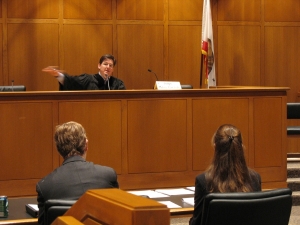By Marcus Fields
Last Thursday, in United States v. Hill, an unpublished decision, the Fourth Circuit affirmed the District Court for the District of South Carolina’s revocation of Larry Hill’s release. The Fourth Circuit found that each of Hill’s five contentions on appeal were without merit.
The district court found that Hill violated his supervised release by retaliating “against a federal judge and federal law enforcement officers by making false claims, in violation of 18 U.S.C. § 1521.” The court then revoked said release, sentenced Hill to ten months in prison, and continued him on supervised release for two years. Hill appealed this decision citing five alleged errors by the district court.
District Court Proceedings did not Violate Due Process
Hill first claimed that the district court erred by depriving him of due process. Reviewing this allegation de novo, the Fourth Circuit found that the record indicated that Hill received appropriate due process. It noted that Hill “received a full hearing, was permitted to confront his accusers, and was given notice of the charges via the supervised release revocation report.”
Hill Waived Right to Appeal Denial of his Motion to Dismiss
The Fourth Circuit next noted that because Hill did not “address the district court’s grounds for denying his motion to dismiss” he forfeited the issue on appeal.
District Court Did Not Abuse Its Discretion in Denying Requests for Witness Subpoenas
Hill next claimed that the district court erred in denying his requests for witness subpoenas. The Fourth Circuit reviewed this denial for abuse of discretion, but reviewed whether this denial violated Hill’s right to confrontation de novo. Because “supervised release revocation hearings are not ‘criminal prosecutions’ under the Sixth Amendment, the Fourth Circuit has previously held that defendants in such hearings are only entitled to the right of confrontation found in Fed. R. Crim. P. 32.1(b)(2)(C). Regardless, the Fourth Circuit found that “Hill was afforded a full opportunity to confront his accusers.”
District Court Did Not Abuse Its Discretion in Denying Motion for Recusal
Hill next claimed the district court erred in denying his motion for recusal. Citing 28 U.S.C. § 455, the Fourth Circuit explained that a judge should recuse herself “in any proceeding in which h[er] impartiality might reasonably be questioned; [w]here [s]he has a personal bias … or where she has a financial interest in the litigation.” Generally, the personal bias must come from outside the judicial proceeding and for a financial interest to be disqualifying the litigation at issue must substantially affect the interest.
Hill seems to contest that because “he was charged with attempting to file a false lien against the presiding judge,” the judge has a financial interest in the litigation. The Fourth Circuit notes that “no reasonable person would entertain” such an assertion, and even if the court were to consider it, the “‘interest’ is far too remote and speculative to necessitate recusal.”
District Court Did Not Abuse Its Discretion in Revoking Hill’s Release
Finally, Hill claimed that the district court lacked sufficient evidence to revoke his supervised release. The Fourth Circuit articulated that in order to revoke a supervised release, the district court must find by a preponderance of the evidence that the defendant violated a condition of the release. Reviewing for clear error, the Fourth Circuit concluded that “the district court did not commit clear error in finding, by a preponderance of the evidence, that Hill attempted to create a false liens” in violation of his supervised release.
Because the Fourth Circuit found no merit in any of Hill’s contentions, it affirmed the judgment of the district court.









